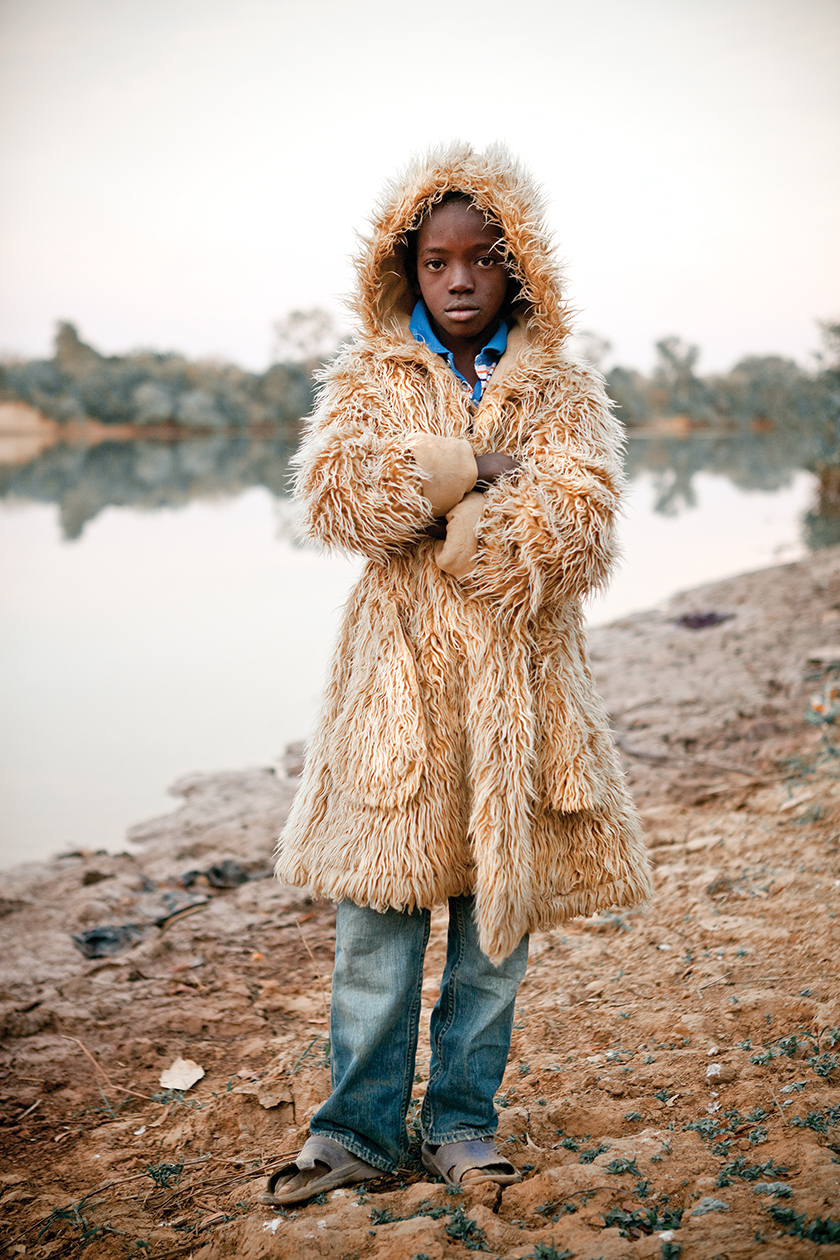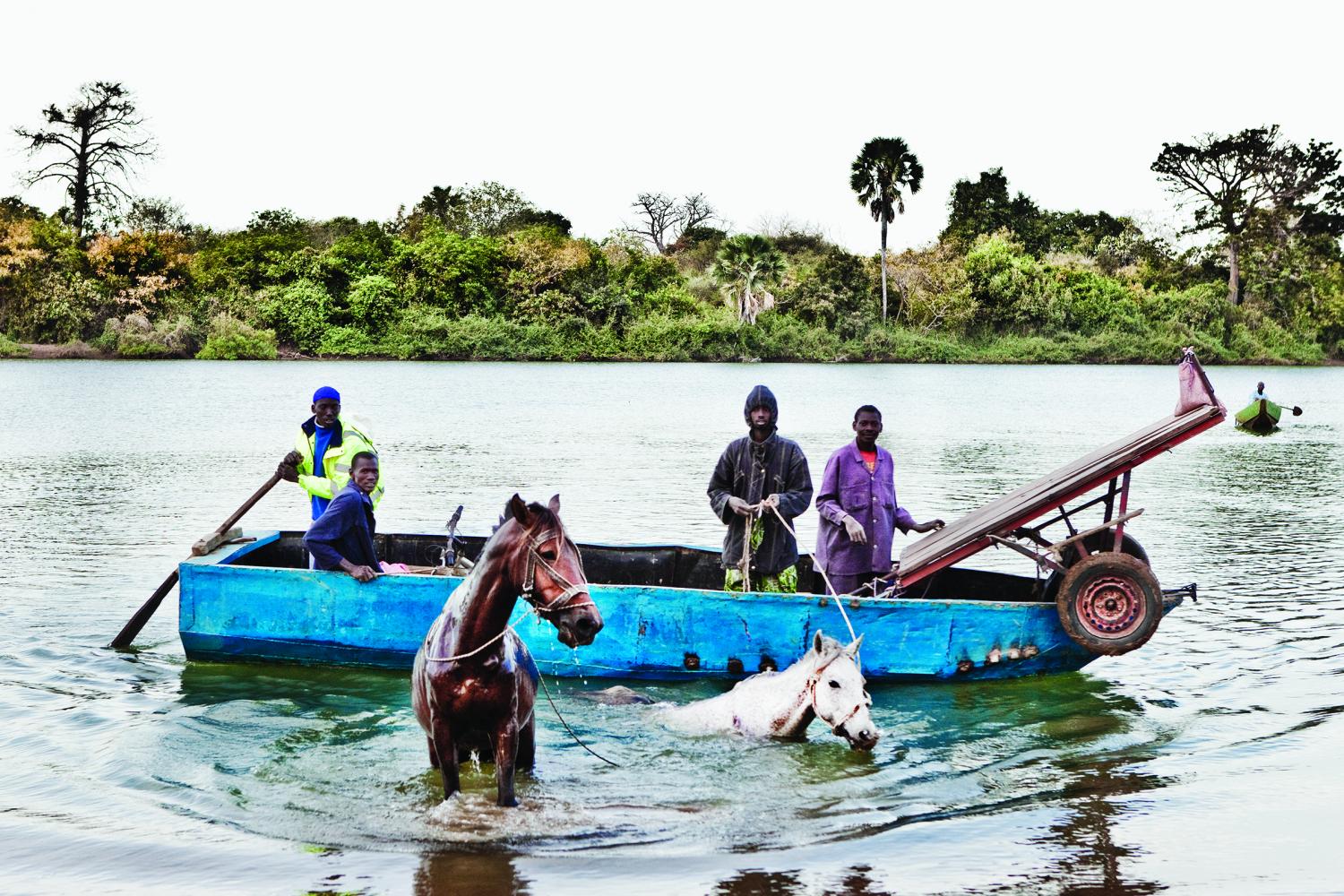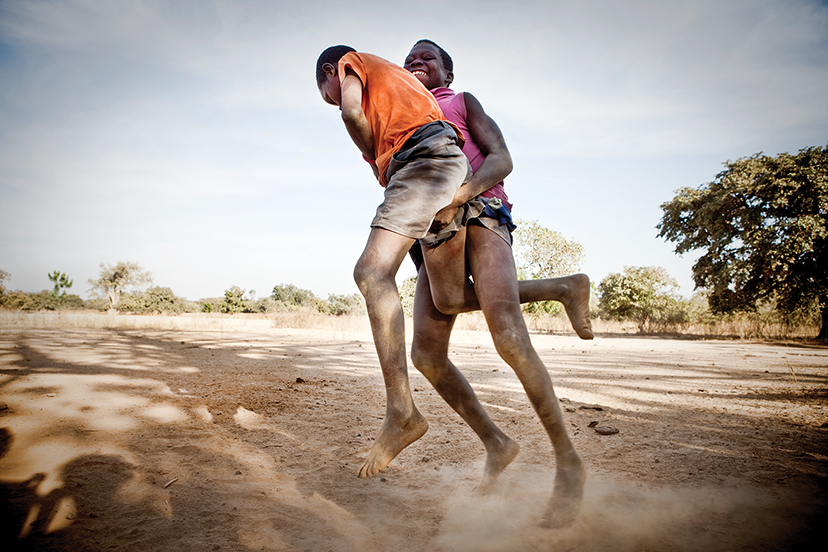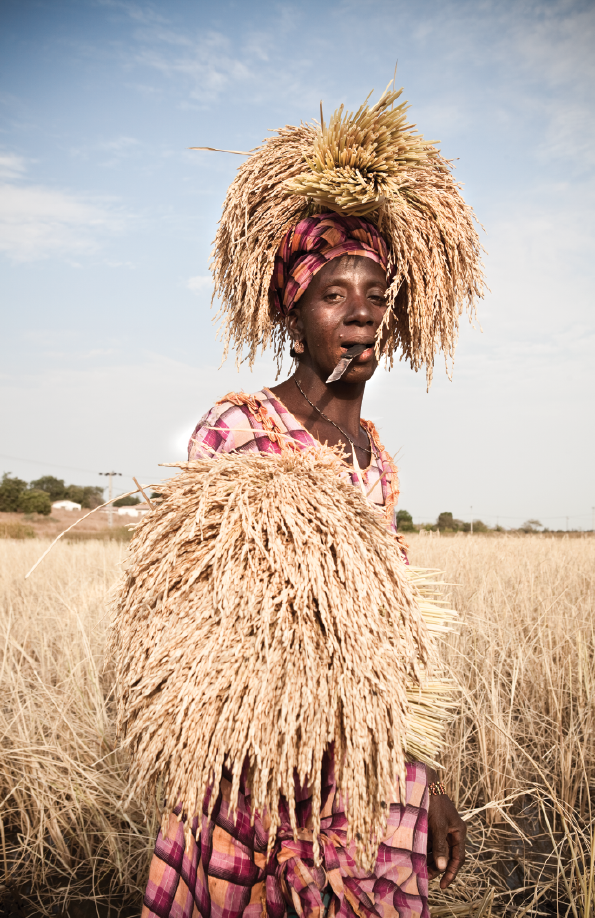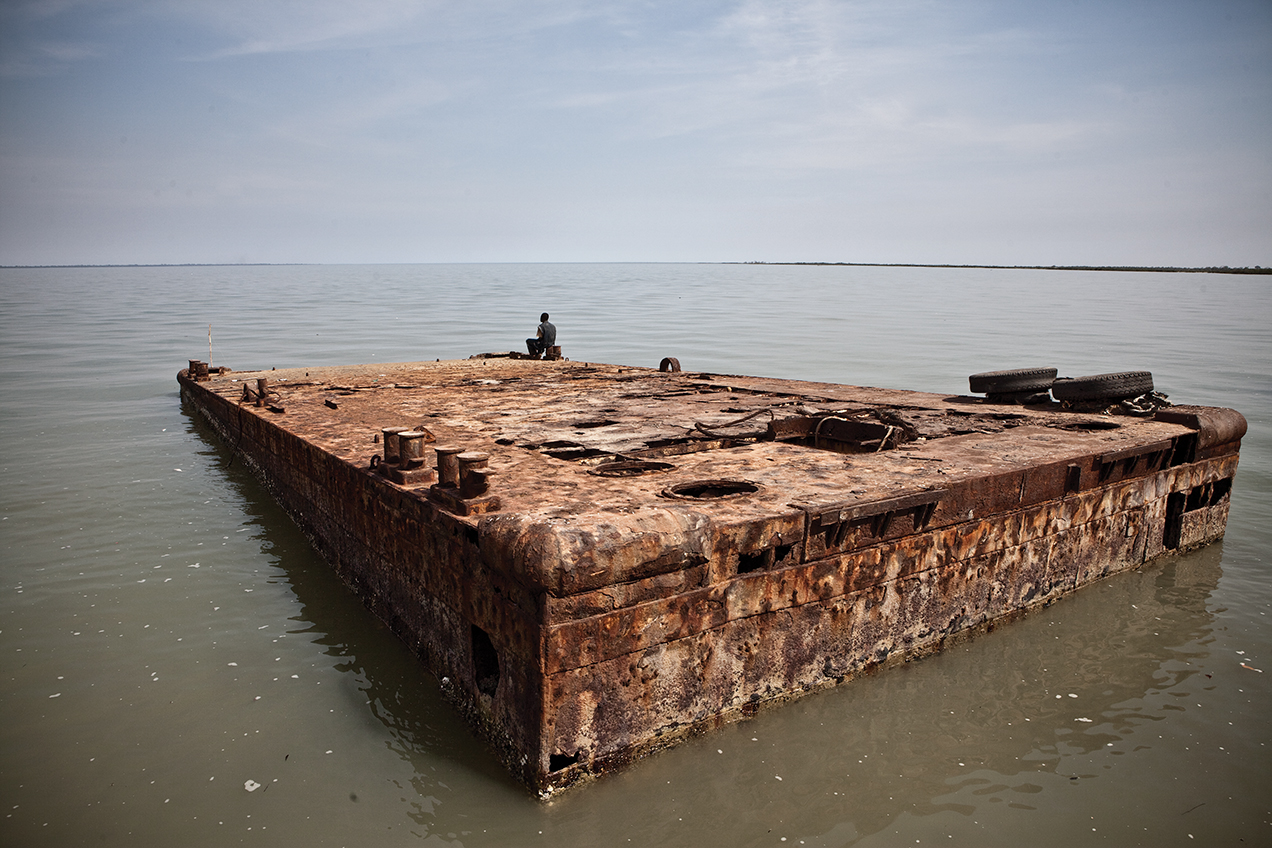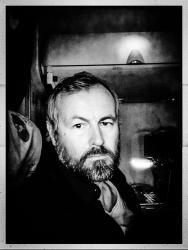
Flowing westward 700 miles from northern Guinea, through Senegal and the Republic of Gambia to the Atlantic Ocean, the Gambia River is one of the last un-dammed major rivers in Africa. It begins as a trickle in the Fouta Djallon plateau, winding through swamps and highlands, through sandstone and jungle, to where it carves out a channel eight miles wide as it opens to the sea.
In November 2012, photographer Jason Florio and his wife, writer Helen Jones-Florio, began a sixty-day journey by canoe to document the communities and cultures sustained by the river. Keeping in mind the planned development of the Sumbangalou Dam (on the Senegal–Guinea border), the Florios considered this as much a mission as a journey. The promises of modernity ascribed to the dam—electricity, employment, industrial-capacity irrigation—will inexorably alter the ecosystem of the river, changing everything from the water levels that balance the delicate breeding grounds of the Niokoloa Koba National Park to intensifying the salinity upriver, which could potentially wipe out the rice crops villagers rely on for survival.
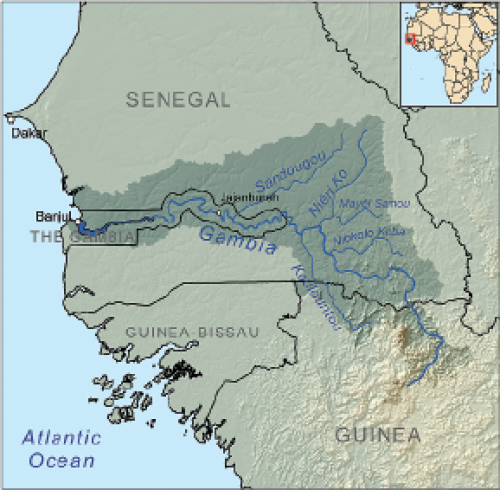
Perhaps as important as the expedition itself is how it came to fruition. The economic zeitgeist of the digital age makes guerilla marketing and fundraising an indispensible tool of the independent creative project. The Florios used crowdsourced funding as well as a handful of sponsorships to help finance their trip, with donors—130 at final count—receiving a fine-art print from the expedition.
As for lessons learned, Florio says that he was humbled by how easily his extensive planning was upended by the trip itself. “There’s a certain amount of research you can do before a journey like this,” he says. “But most of it—the important stuff, anyway—can only be done once you start it. You can sit in your living room for ten years trying to find things on the Internet to help you—guides, when the water level is right, that sort of thing—but a lot of it is just buying the ticket and getting on the ground.”

